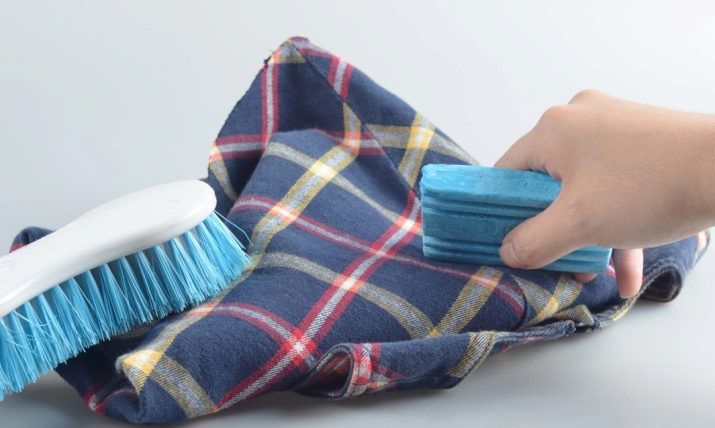All about tissue in a cage
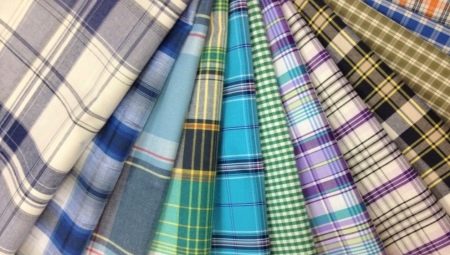
Checkered material is always in demand among consumers. Clothes, hats, curtains, tablecloths are sewn from such fabric, as well as handbags, umbrellas and other accessories. The print is found not only on household items, but also on objects located in public places, government institutions.
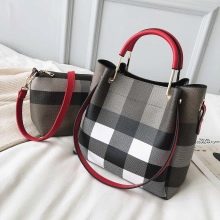
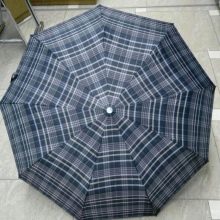

Peculiarities
Checkered fabrics are always in demand. The concept itself denotes a generalization of any materials united by a checkered image. A canvas with a similar pattern is presented in many different options. The print itself changes periodically, acquiring new types of squares and color spectra.
It is impossible to determine exactly in which country the checkered fabric was first made. During excavations, archaeologists observed checkered patterns on Egyptian shrouds, Japanese kimonos, ancient Roman togas and on clothes worn in ancient China. A similar ornament is found on Byzantine engravings and ancient Russian frescoes. A print with a large check on clothes is considered to be a Scottish invention.

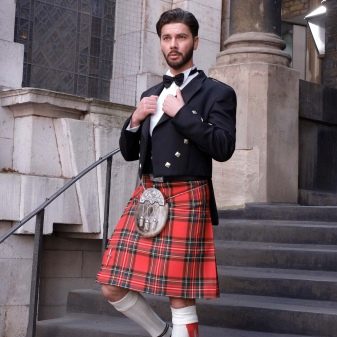
Most often, the cells are created using the twill method. They are made from cotton threads, tightly woven together. Manufacturing takes place by dyeing each strand. After that, the fibers are sequentially intertwined until they reach full symmetry. Square blocks form a single whole on a homogeneous material. It happens that in the process of the final part of the production of checkered fabrics, etching is used. The pattern is already applied to the painted canvas.
Due to the deep penetration of the aniline dye into the fiber, delicate types of fabrics acquire rich, colorful shades.The use of high quality dyes ensures a stable color saturation, so things do not lose their appearance for a very long time. Over time, under the influence of external factors and numerous washes, the cells are scraped off evenly.
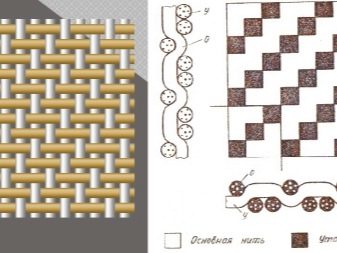
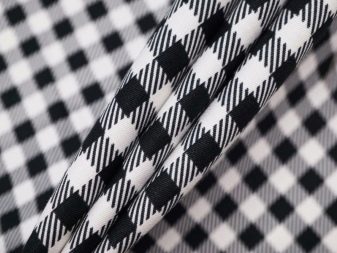
The checkered pattern is found on different types of fabric. Cells can decorate low-density linen and durable fabrics that are used to make outerwear. The checkered material attracts consumers with its wear-resistant properties and beauty. The addition of elastane and polyester to modern fabrics contributes to the acquisition of lightness in ready-made garments. In addition, the clothes are not wrinkled.
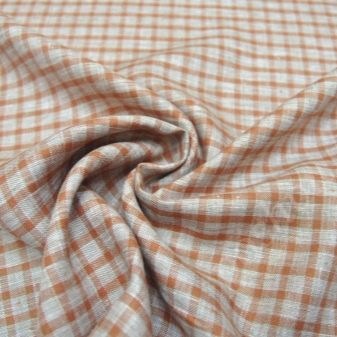

Views
Depending on the ornament and the used fabric raw materials, some types of cells are distinguished.
Tartan
A popular pattern is rectangular square blocks formed from horizontal and vertical stripes. Cell segments are filled with diagonal lines. Usually, such an ornament is created using a twill weave of threads, dyed in the required colors. The size of the cells can vary, but the squares themselves are always symmetrical. The residence of the British Queen Victoria was decorated with a checkered pattern. After that, furniture tartan came into fashion. The very concept of "tartan" denotes the general name of a pattern that unites many different combinations.
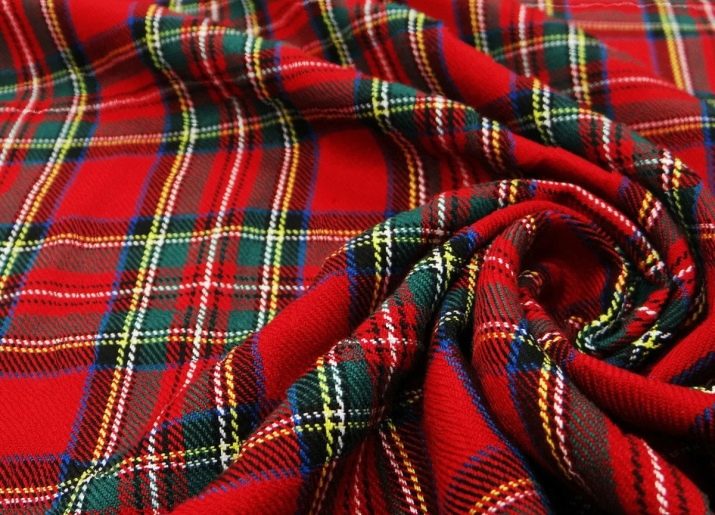
Black watch
The ornament is a type of tartan. Initially, the print was applied to the uniforms of representatives of a special British regiment participating in the decisive battles of the Anglo-Spanish war of 1739-1742. For a long time, only uniforms for soldiers of special units were made from such fabric. Now the pattern, consisting of a chain of alternating dark purple and green checkers with two alternating thin stripes between them, is used for sewing everyday clothes.

Burberry
The British type of tartan bears the name of its creator. The checkered fabric became famous for its special ornamentation in a large check. The drawing looks like this: black, red and white lines of different widths intersecting with each other are placed on a light base. A pattern of black and white and red lines on a beige background is often used for the production of shirting fabric. The finished product is pleasant to the touch. It keeps its shape well, has wear resistance and breathability. Consider wearing a beige check long sleeve shirt for a casual level of dress. The exclusive pattern can be seen on home textile accessories, rugs, bedspreads, bedding, scarves, umbrellas and handbags.
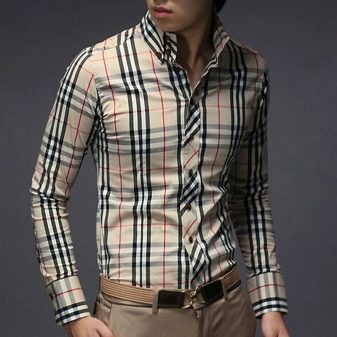
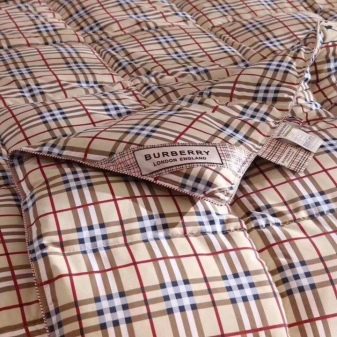
Glenchek
It is no coincidence that gray fabric with the image of a successful combination of large and small cells is endowed with another name: "Prince of Wales". Initially, this kind of tartan was used in the 19th century to make equipment for the Rangers of the Seafield family. On the hunt, the king's heir, Albert Edward, spotted a successful color scheme with muted black, white, brown and smoky tones. And the fabric became popular at Buckingham Palace. In the picture, each two-tone cell, created using dark and light fibers, contains special stripes. Now material with such a pattern is used for sewing business suits, hats and tablecloths.

Vichy
The cage, invented by the weavers of the city of Vichy (France), has been known since 1850. The fabric is decorated with two-color symmetrical squares created by intersecting light and dark lines on a white background. For example, shirting can be made up of blue, cyan, and white squares. Often, red and pink colors or green and light green tones alternate. The result is a checkered material with bright and pale colored squares.
Initially, the material was used for the manufacture of bedding, napkins, curtains, tablecloths.
After being placed on a magazine cover photo of Brigitte Bardot in a plaid skirt, this pattern is wildly popular.
Now such an ornament is often present on various items of women's and men's wardrobe. A small cage can be seen on upholstery fabric for furniture.


"Chicken foot"
The drawing consists of broken cells resembling rhombuses. It combines abstract polygonal shapes and asymmetrical stripes. A two-color geometric pattern is most often composed of black and white pattern elements. The print, invented in Scotland, was incredibly popular in the middle of the 20th century. Now the twill weave consists of intersecting 4 light and 4 dark strands of different shades. The fabric is used for sewing cardigans, vests, jackets and suits.
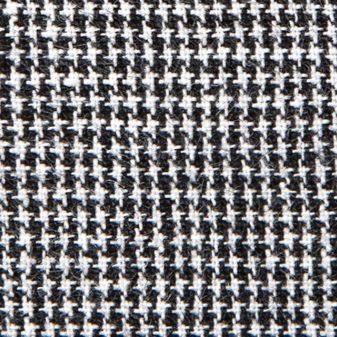
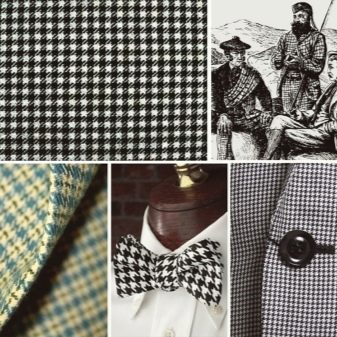
Pepita
The name of the ornament comes from the nickname of the Spanish dancer. The print is somewhat similar to a “chicken foot”, but the corners of the small squares contain peculiar curls that connect diagonally.
The black and white pattern is still used in the manufacture of shoes, handbags, woolen clothes, linings and the seamy side of various things.
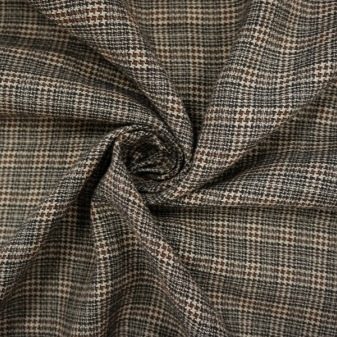
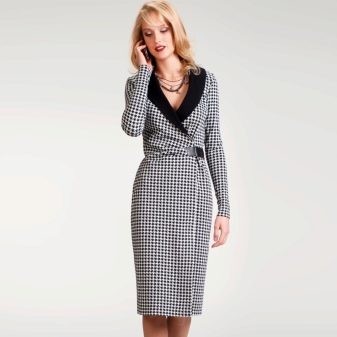
Madras
Bright clothing with the image of a large asymmetrical cell, applied to a light cotton material, was common in ancient India. The pattern was named after the city of Madras. The back of the fabric follows the colorful pattern of the front. The fabric is used for sewing light summer clothes. It looks great on shirts, shorts, jackets, ties, caps.

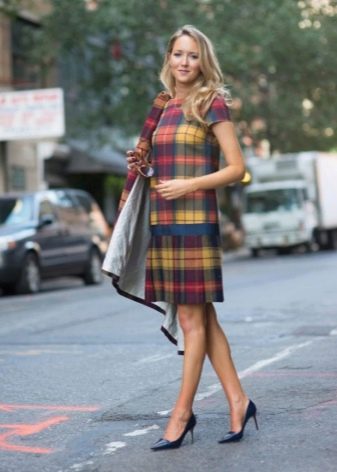
Tattersall
At the end of the 19th century, material depicting the middle cage, obtained by crossing thin colored stripes, was observed by the British people on horse blankets. The drawing is still associated with rural life. Now the products are in great demand among students of Cambridge and Oxford Universities. Especially white or sandy tones are used.
Shirts with such a cage are usually worn on weekends and holidays.


Applications
From the checkered material, products are made that are used for different purposes.
The production of bed linen, bedspreads, blankets, curtains, kitchen towels, napkins and other household items has become widespread. They are usually done in muted colors. Sometimes the cells are combined with another pattern.
Checked fabric is used to make hats and various accessories. The production of checkered umbrellas, cases for smartphones, handbags, wallets, various belts, butterflies, headbands and headbands has been established. Cloth bags can also consist of checkered inserts. Handbags made of red fabric in a large cage look great.
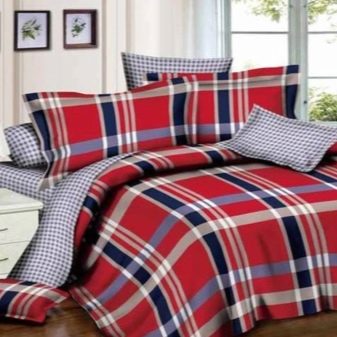
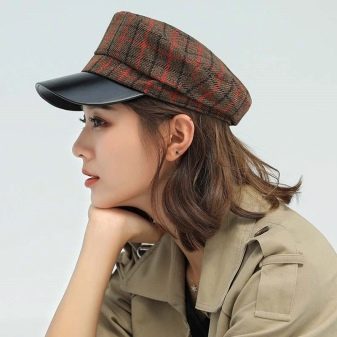
A similar pattern is often found on clothing. A large colored check is perfect for sewing summer shirts and shorts. From such fabric you can sew fashionable sundresses and skirts for a woman. Black and white checks look great on dresses, shirts and blouses. Things are often used during leisure and walking.
The chunky red fabric dresses are perfect for everyday wear. A casual plaid dress can be mini, midi and with a floor-length skirt. An outfit resembling a men's shirt can be worn with a belt.
Fitted products in a small cell look wonderful on slender girls.
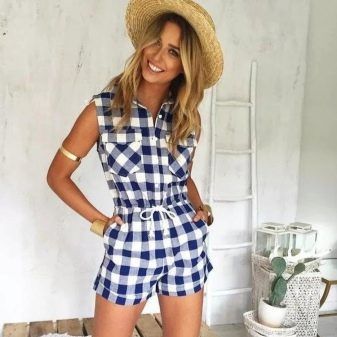
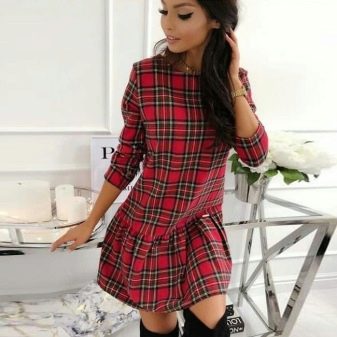
Checkered trousers look very stylish. Shirt fabrics have a smooth surface. Linen shirts are highly absorbent. The flannel material contains a small soft pile. Shirts, shirts and robes are sewn from it.
Business and classic suits can also contain the image of cells. It is appropriate to sew an office dress from a fabric with a small cage. Preference should be given to a black and white pattern. Chicken feet and glenchek look austere and elegant. You can opt for business plaid dresses with a white collar. A large cell is rarely used in office fashion.
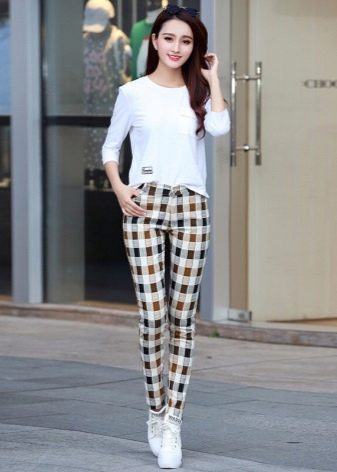

A student's costume is often associated with plaid things: a skirt, vest or jacket. For sewing a school uniform, it is advisable to choose a fabric that combines several shades. A suit or dress with variegated and green cells looks good. Such clothes are in perfect harmony with monochromatic things.
An evening checkered outfit is usually made from a plain fabric. It is sometimes decorated with lace or leather inserts.
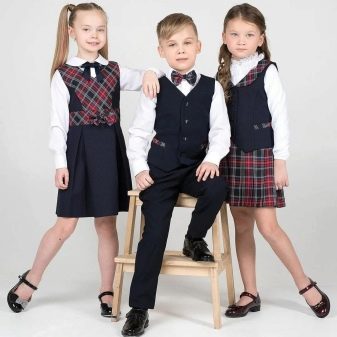

Care Tips
In order for plaid clothes to serve for many years, it is necessary to take into account some of the features of caring for them. Most often, the cells are applied to a material created from natural fibers, so it is very important to pay attention to the following points:
- do not soak the item before washing;
- such clothes should be washed separately from white clothes at a temperature of 30 to 40 degrees;
- to avoid loss of shape, machine spinning is not recommended;
- drying is carried out in the open air without direct sunlight.
